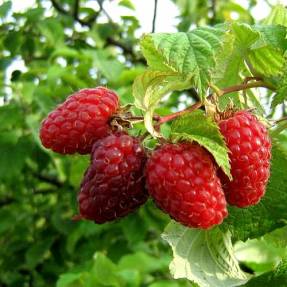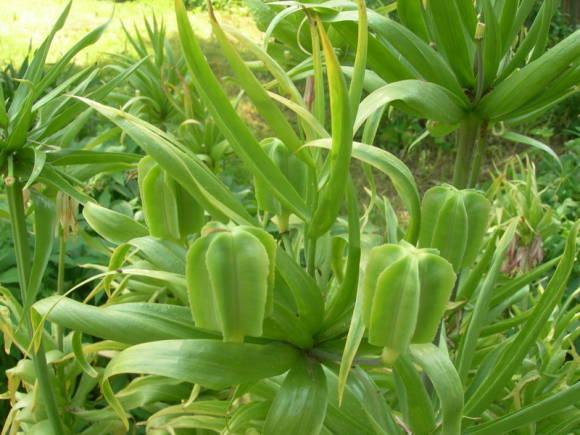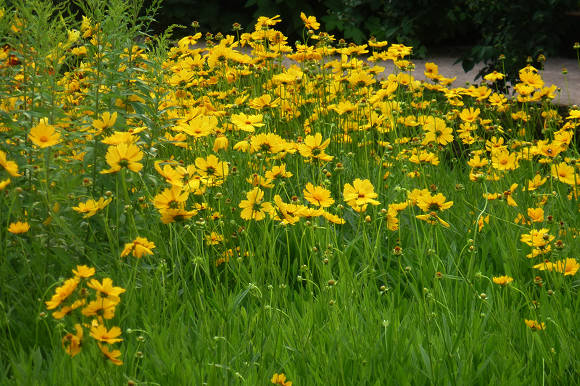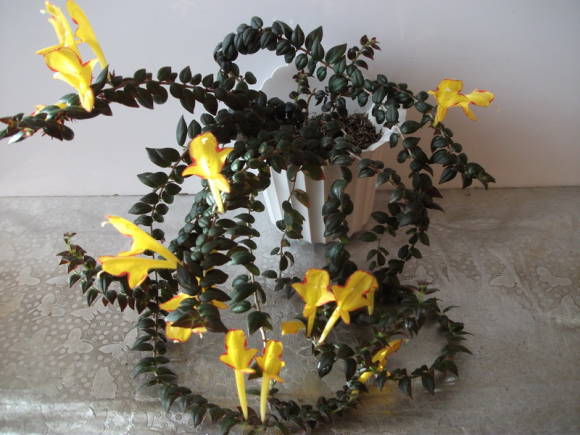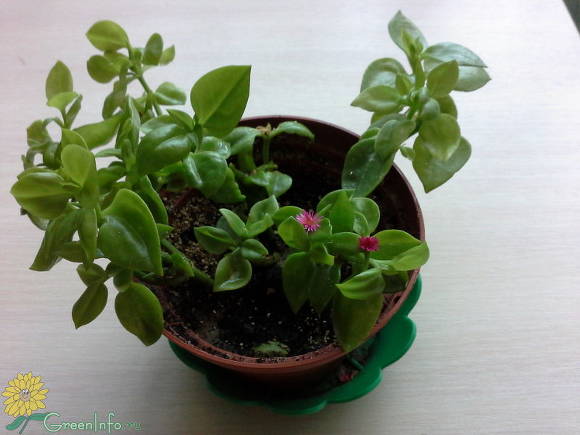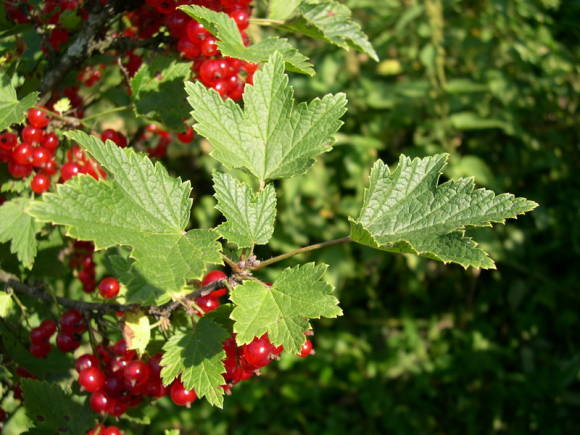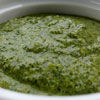Aspleniums are one of the most popular and decorative ferns. In indoor culture, several thermophilic species are widespread, such as Asplenium nesting, A. ancient, A. common, A. onion-bearing, A. viviparous, and some others.
About the variety of cultivated species - on the page Asplenium.
Their appearance is very diverse, there are varieties with whole belt-like fronds, often corrugated, while others have cut or forked leaf blades, there are cultivars with openwork pinnate and variegated leaves. Recently, new cultivars supplied through nurseries in Thailand have joined the long-grown varieties of Aspleniums.
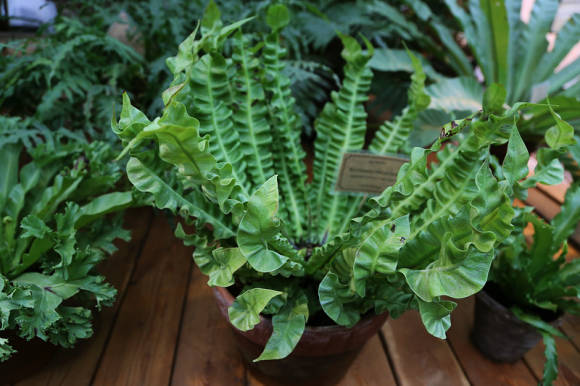
- Fimbriatum - a natural variety of nesting asplenium with wide wavy leaves cut from the base to the top.
- Crissie - resembles a nesting asplenium in habit (Asplenium nidus), but thin leathery light green leaves at the ends branch many times. Plant height - up to 40 cm.
- Crispy wave - a variety with solid, highly corrugated, wavy leaves.
- Cobra - Filipino variation of the nesting asplenium with shiny bright green wavy leaves, the tips of which curl into the center of the rosette. The diameter of the fern crown is about 40-60 cm.
- SupremeCobra - obtained from the previous variety, with more corrugated and long fronds, reaching 100 cm, with curled leaf tips in the center and white-yellow central veins in the upper part.
- Variegata - variegated variety of nesting asplenium, almost even, non-wavy leaves are speckled with transverse narrow white and green stripes extending from the central vein to the edge of the leaf.
- Osaka – ancient asplenium cultivar (Asplenium antiquum), with long, narrow, pointed corrugated leaves.
- Victoria - differs from Osaka in compact size and more curved leaf tips.
- Cristatum - variety of asplenium ordinary (Aspleniumscolopendrium) with wavy leaves ending in a crest.
- Marginatum - cultivar of asplenium centipede with narrowed lobed fronds.
- Ramosa Marginata and RamosaCristata - varieties of asplenium ordinary with very decorative, strongly dissected and wavy leaf blades.
- Undulatum - miniature cultivar of asplenium ordinary with wavy leaves.
 |  |
 |  |
Growing on trees and falling under the protection of their crown from the scorching sun, aspleniums are quite undemanding to light, and the glossy foliage makes them more resistant to dry indoor air. These natural adaptations make Aspleniums unpretentious in indoor conditions. They can be recommended even for novice flower growers and for landscaping office premises.
Illumination. Aspleniums do not like direct sun, although some cultivars can withstand it. But the leaves, when exposed to direct sunlight, lose their color brightness, acquire a yellowish color and can get burns. Place them in bright, diffused light. You can put the fern pot in a light partial shade, but not in a dark place, on the south-facing windows - a little in the back of the room, on the north windows - directly on the windowsill. In winter, additional lighting will not interfere with them, aspleniums can constantly grow under artificial light.
Temperature. Indoor aspleniums will feel comfortable all year round at a temperature of + 16 ... + 24 ° C. Heat-loving ferns do not tolerate sub-zero temperatures. Asplenium centipede can be grown in winter gardens and cool greenhouses.
Watering regular, avoiding overdrying the substrate, aspleniums always prefer moderately moist soil. However, over-watering the fern can get sick. Water after lightly drying the top layer of soil, excess water from the pan must be drained after 15-30 minutes. If a slight overdrying is allowed, then completely immerse the pot in water for a short time until air bubbles come out.
Read more about watering in the article Watering rules for indoor plants.
Air humidity for asplenium it is better to maintain it at 60%, which is also comfortable for humans. During the summer months, the air humidity is usually sufficient and no measures to increase it are required. During the heating season and in the heat, spray fronds from a fine spray with warm boiled water several times a day, this will help the plant to cope with dry air and heat. Aspleniums can tolerate low air humidity, but their growth will slow down, and dry edges will appear on the leaves. These ferns work well for light-colored bathrooms and kitchens where the air is more humid.
 |  |
Soil and transplant. Aspleniums grow slowly and do not require frequent transplants and a large amount of soil. For them, a ready-made universal weakly acidic substrate for indoor plants is suitable. Add about ¼ perlite there so that the water does not linger in the pot. Transplant them only by careful transshipment and only when the previous volume has been well mastered by the roots. As the fern grows, the lower leaves die off, and it will gradually rise above the ground level, large specimens can overturn a small pot.
Read more in the article Transplanting indoor plants.
Top dressing. It is enough to apply from spring to autumn a universal complex fertilizer for indoor plants in ¼ dosage. As epiphytic plants, Aspleniums are good for foliar feeding. Spray the leaves with a mild solution of the same fertilizer once a week.
Reproduction. Aspleniums do not produce daughter plants in a pot, so the method of reproduction by division, like many other ferns, is not suitable for them. Species such as Asplenium bulbiferous and A. viviparous can be easily propagated with the help of the children formed on the upper sides of the leaf plates, having deposited them and placed in a greenhouse for growing. In other species that reproduce only with the help of spores, it is difficult, almost impossible, to obtain offspring at home, since the process requires special conditions.
Pruning, shaping... Aspleniums do not need them, only the lower leaves that have died out from old age are removed. Can't use leaf glitter.
Pests. In dry air, they can be affected by ticks. Aspleniums are often marketed infected with mealybugs. Care must be taken when handling chemicals, delicate fronds may be damaged.
About plant protection - in the article Houseplant pests and control measures.
